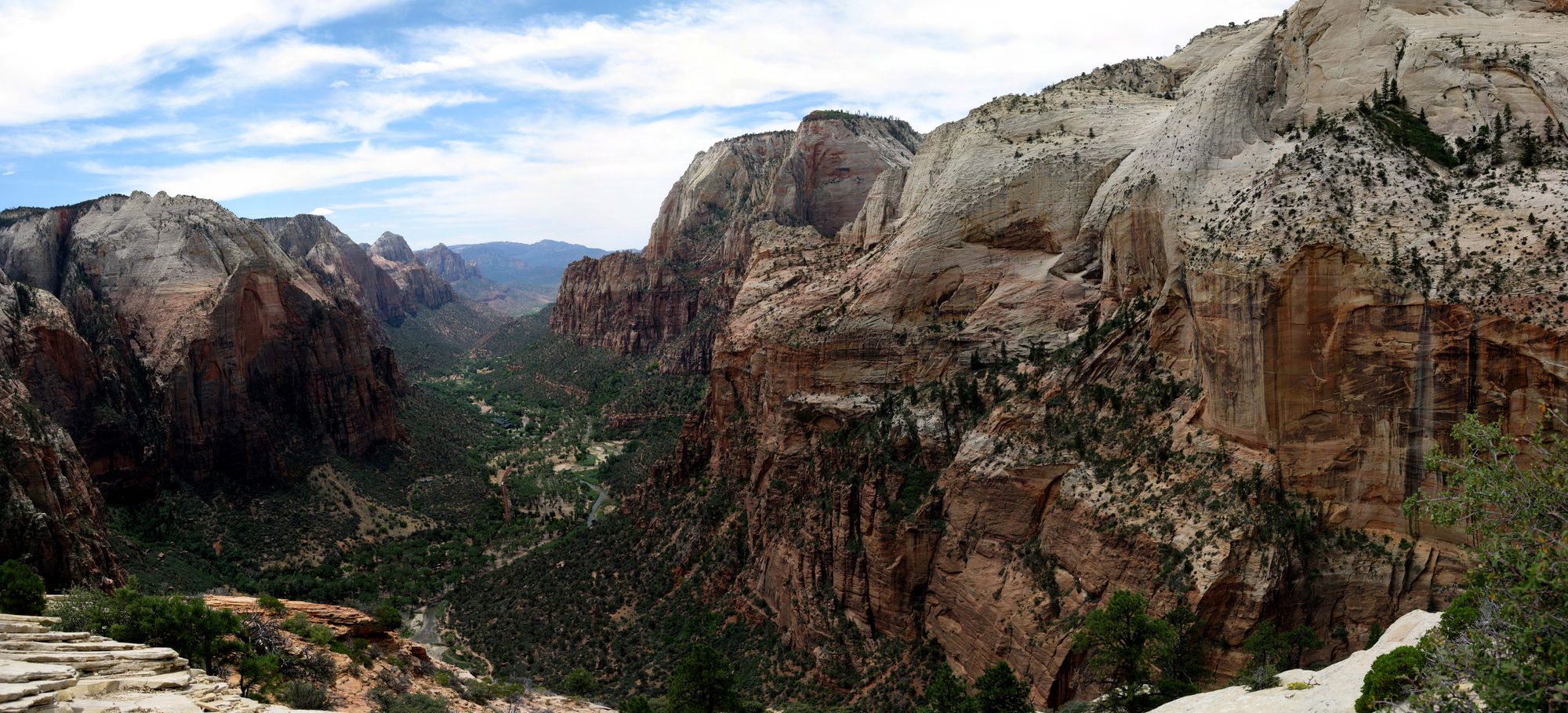Zion National Park - Summer 2009
Overview - The best way to describe Zion National Park is say that it is a mini-Grand Canyon, but with more vegetation, and in some ways more beautiful. The park is also extremely well organized and has one of the best shuttle systems we have seen in a National Park. Make this your final stop in Utah, as nothing else comes close, except for maybe Bryce.
Details - As per our usual way of doing things, we only had one full day of hiking in Zion National Park, so naturally we felt like we had to make the most of it. We got up at 5am to catch the first shuttle into the park at 5:45am along with 5 other brave souls. Our first hike of the day was The Narrows. The Narrows is the canyon that is known the world over by the National Geographic picture that illustrates the colors in the dry season. From the shuttle stop, Temple of Sinawava to the actual "hike" into The Narrows, it is about a mile of flat walking along the river. Before I detail the hike, you should be aware that everything you have on your person can possibly get wet. You need to bring a pair of socks and/or shoes depending on how quickly yours dry, as those will get wet for sure as you are hiking in a shallow river. You also need a walking stick, as the rocks can be quite slippery. BONUS TIP - Get a free hiking stick instead of renting one at the start of The Narrows if you get there early like us. One more thing to understand before you hike is the flood potential, as you are in a narrow canyon that can turn in to a river rather quickly. Be sure to check at the information center what the situation is before hiking.
The hike itself was one of the most unique we encountered on our entire trip, because you are hiking through a narrow canyon in a shallow river most of the time. However, the lack of color was kind of surprising, as we had expected it to look much more red and yellow. It was awe-inspiring in its own way though.
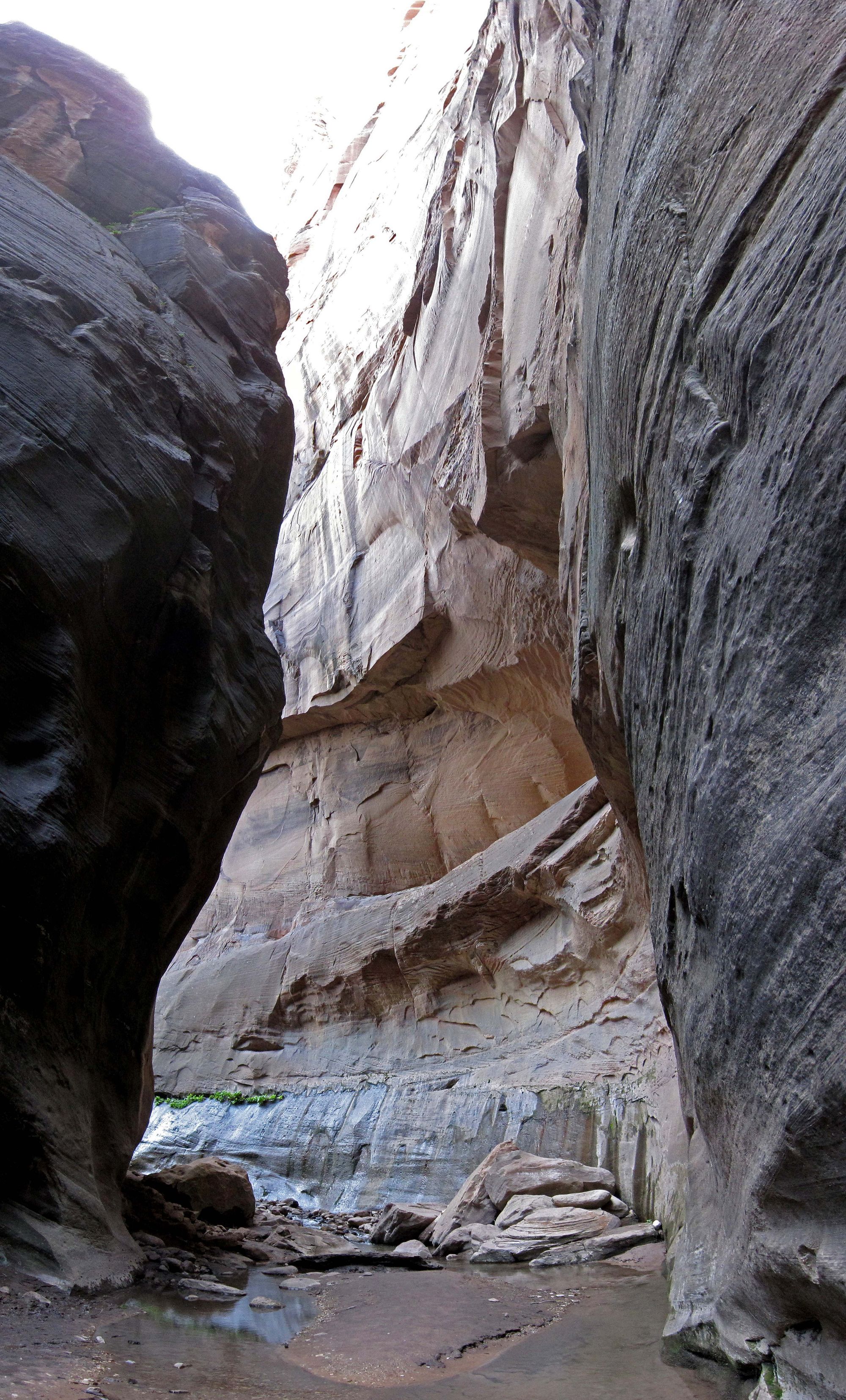
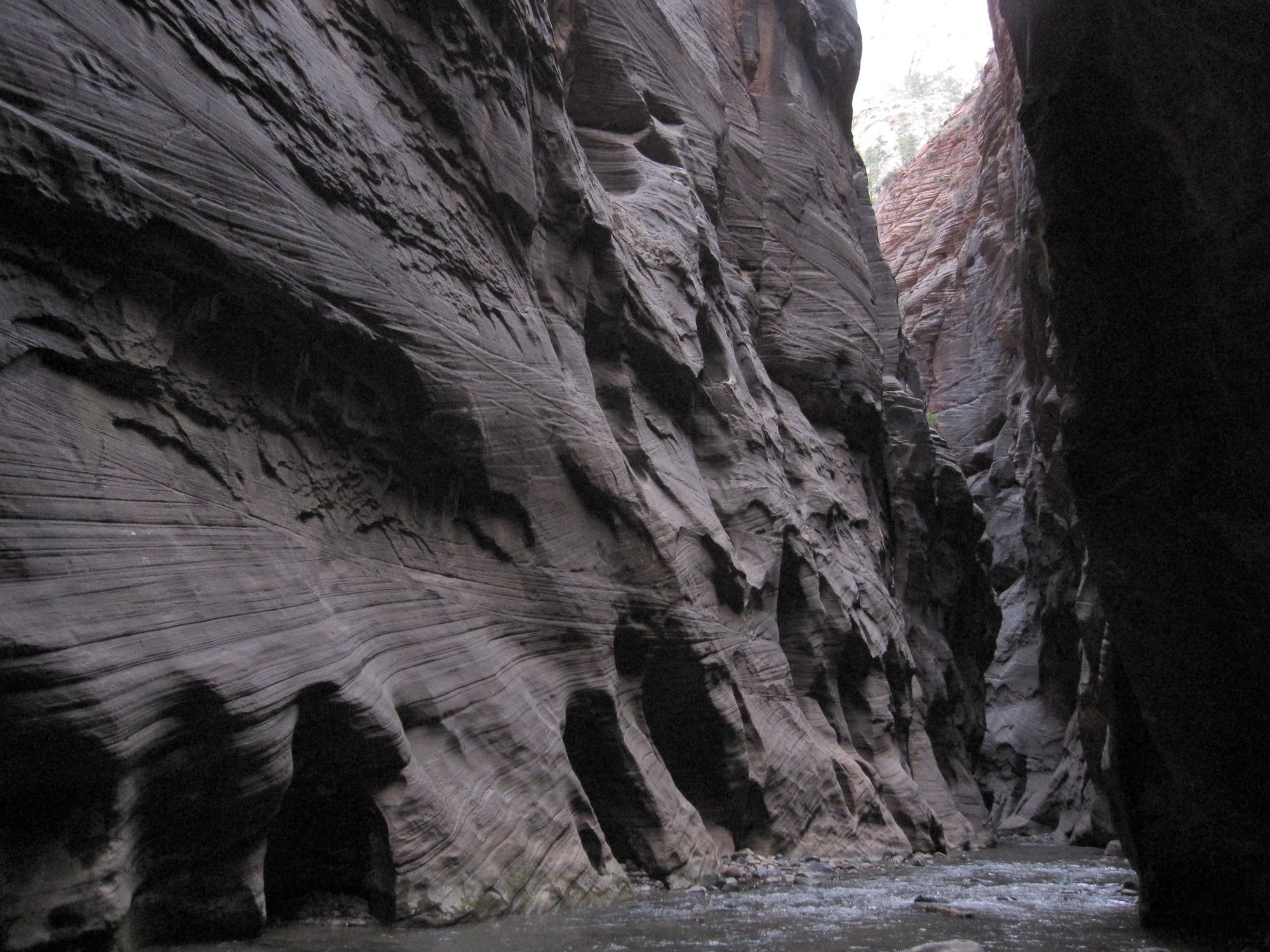
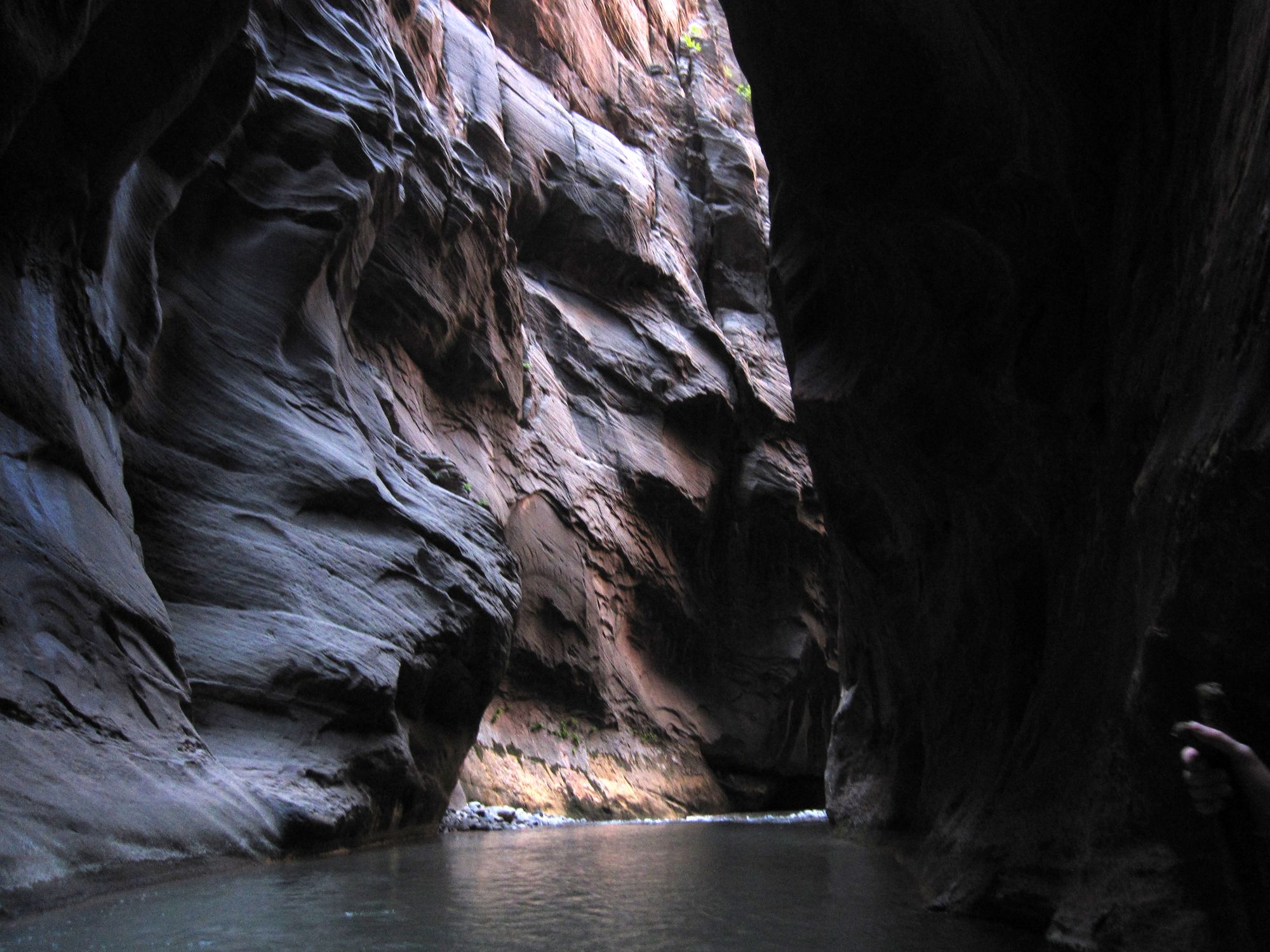
The Narrows Canyon Hike
After hiking about 4 miles in to The Narrows, and fording several chest high sections of river, we decided to turn back, as we had reached a point where we would have to literally swim across a section of the trail. First off, we didn't want our gear to get totally soaked even though we had double bagged everything. Second, we had other hikes we wanted to do, and in the interest of time, decided we had enjoyed enough of The Narrows. It took us another 2 hours to get back to the Temple of Sinawava/Shuttle Stop where we switched out our shoes and got ready for our next hike. An important thing to note is that you can refill on water at most, not all, but most shuttle bus stops, so we carried 5 liters on these hikes instead of our normal 7.
After taking the shuttle back through the park (The Narrows is the last stop.) and getting off at The Grotto, we started our hike up to Angels Landing. This trail (5 miles RT, 1,500ft elevation gain) is extremely strenuous and and is extremely steep for the majority of the trail. We were used to it as the trail is very similar to Camelback Mountain, a hike we have in Phoenix, AZ, our home town, but you need to be very careful as this trail can be very tricky without prior experience. The views of Zion Canyon are worth the climb though.

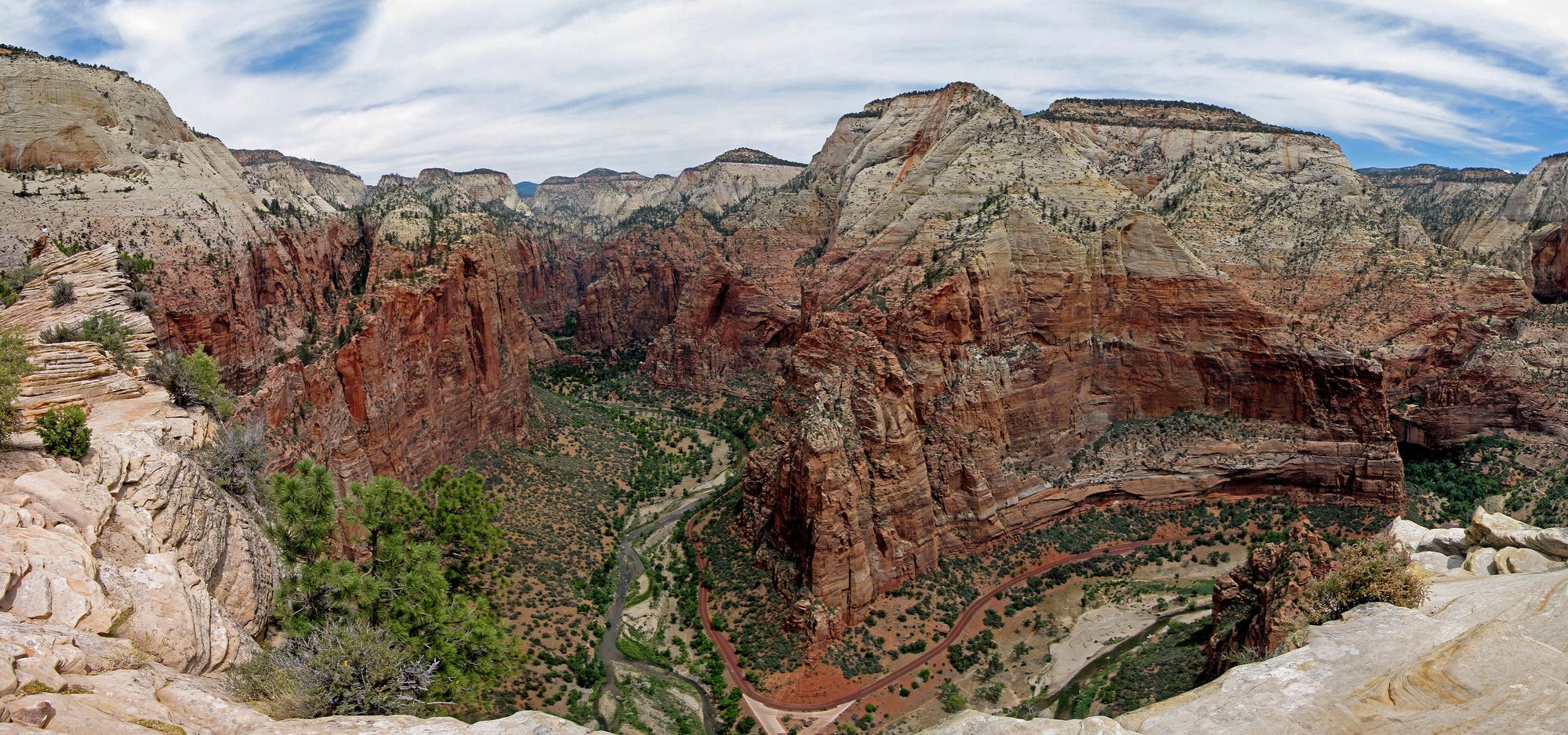
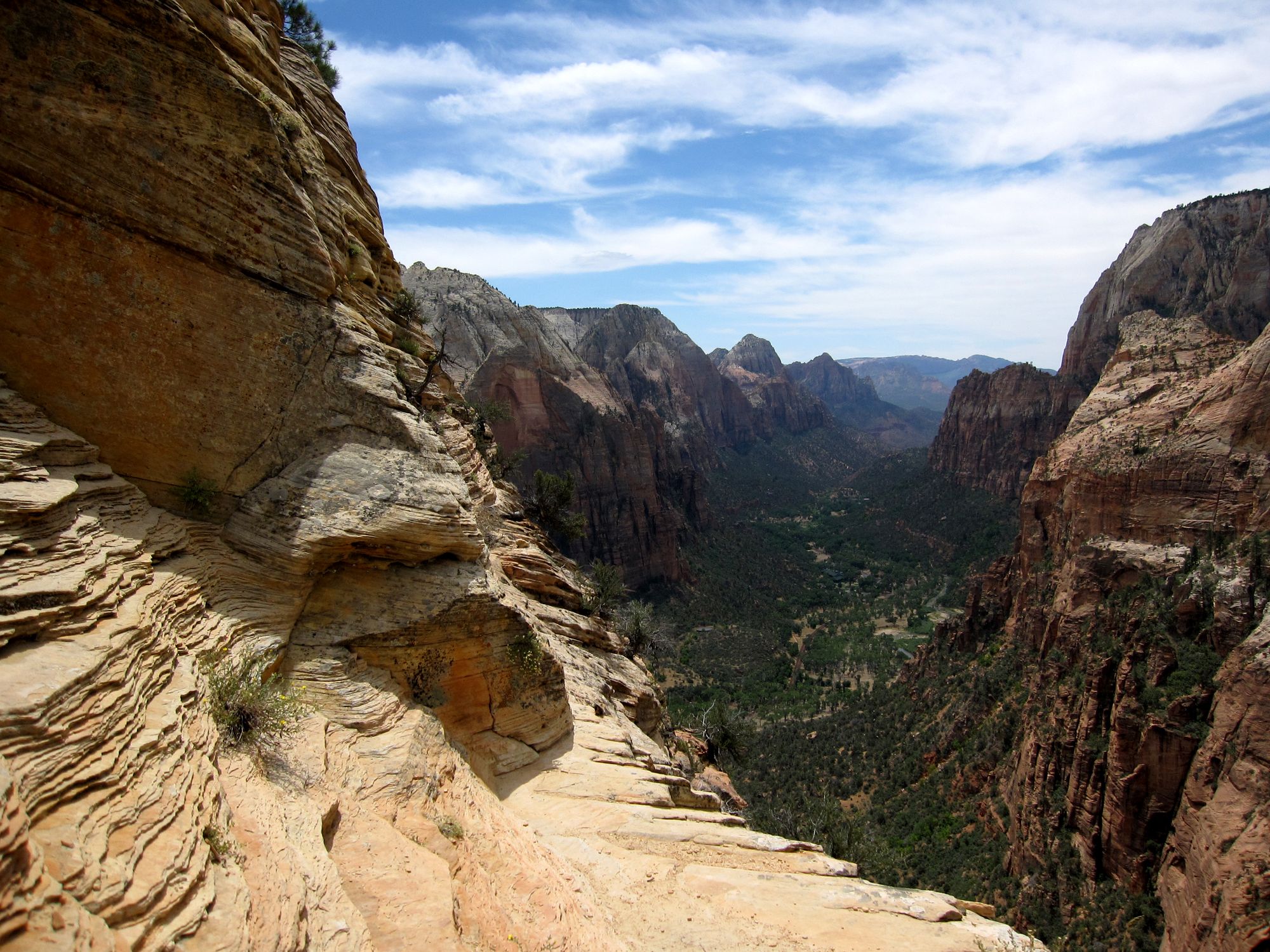
Zion Canyon from Angels Landing Trail
After finishing up Angels Landing and hiking back down to the shuttle stop, we caught the shuttle again back to a stop called Weeping Rock. Here we started our third hike of the day, that being Observation Point (8 miles RT, strenuous with a 2,150 elevation gain). This hike was very similar to Angels Landing in that it was a lot of steep track backs to a great view point where you can see all of Zion Canyon. Be sure to stop about halfway and explore the mini-narrows canyon on the trail.
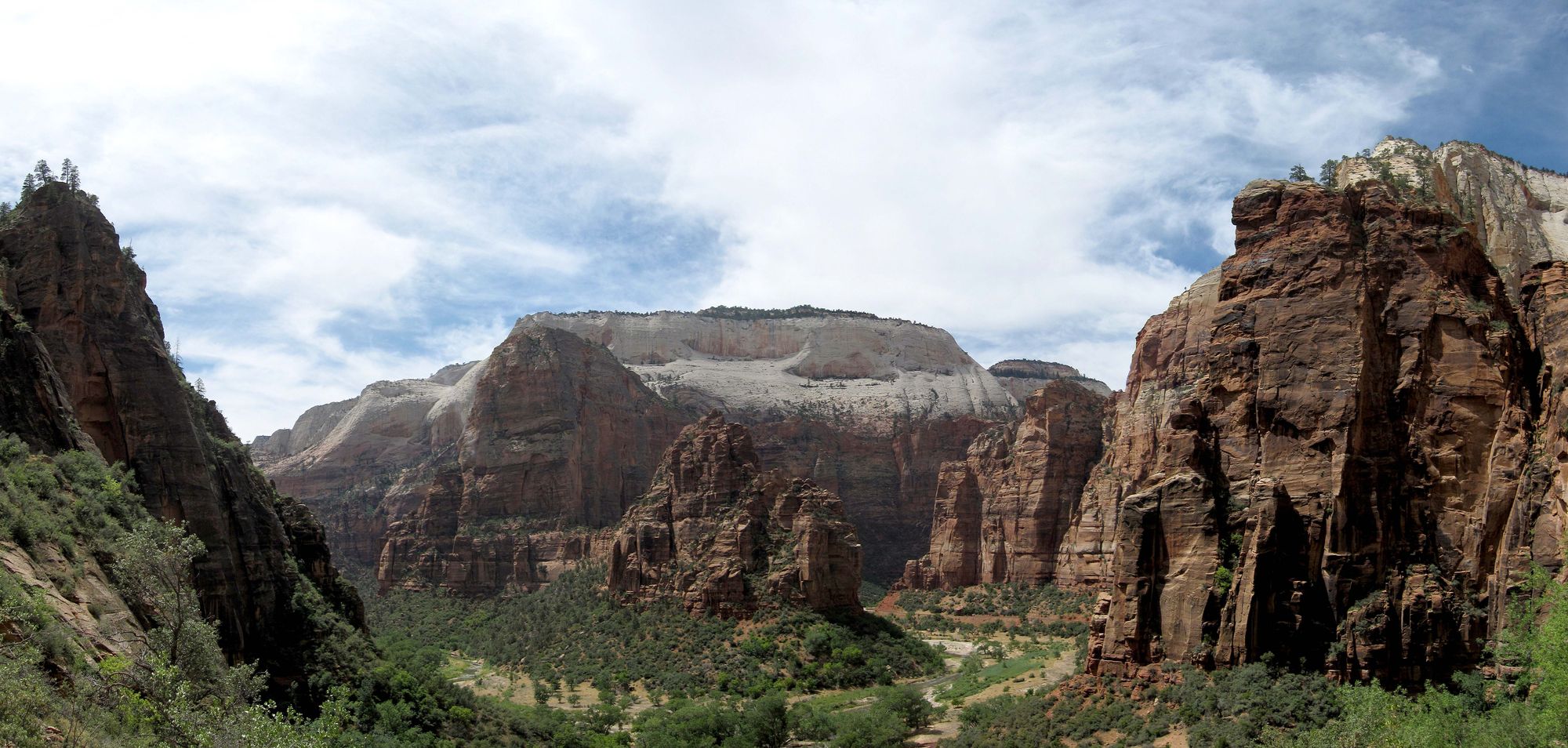
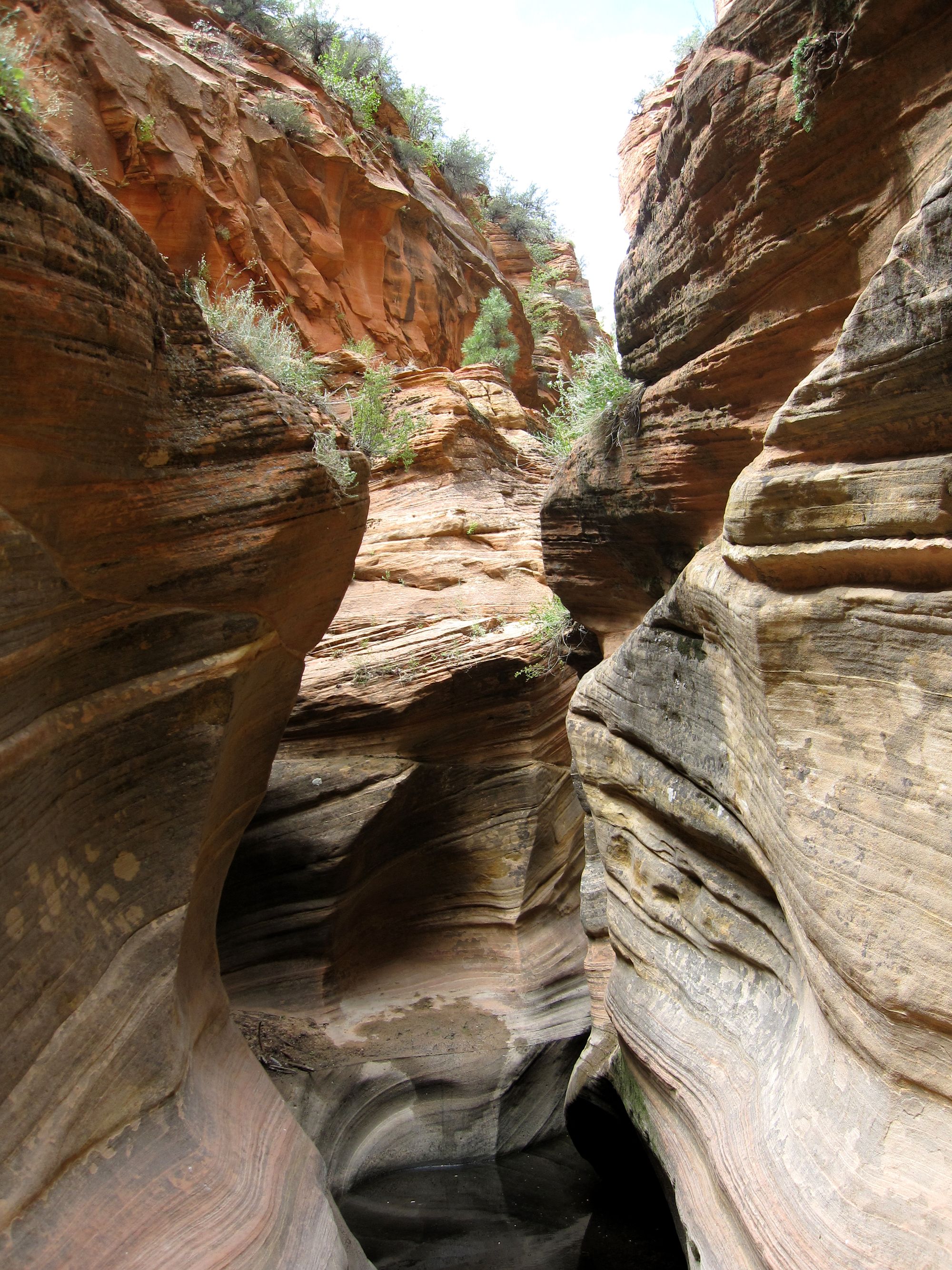

Observation Point Trail
After we took a long break at Observation Point, we turned around and hiked the 4 miles down back to the shuttle (which by the way has a fantastic schedule, every 7-8 mins all day). This put our total tally at 23 miles in Zion National Park for the day. If you want to do the same schedule as us in Zion, be sure to bring lots of food and water, as it was a long day.
Final Words on Zion National Park
Overall Verdict - Zion was one of the most well run parks we happened to explore on the entire trip. The shuttle system combined with the spectacular hikes make it a great park to visit.
Days/Nights to Camp/Spend Here – 3 nights to get 2 full days of hiking. We got lucky with the weather, which was perfect, in that it allowed us to hike The Narrows on the only day that we had. You can either try to get lucky or play it a little safer. Also, there are some smaller hikes that we just didn't have time for, but wanted to try. That extra day would let you do them.
Camping Evaluation - South Campground is a great campground. It is right next to the river and has plenty of large sites which afford a little bit of privacy. It is extremely quiet and really relaxing. If it wasn't so hot, you could spend a day there reading a book.
Best Time To See Zion National Park - Morning again, when we took the first bus in to The Narrows, we were 2 of 3 people hiking it at that time, so we had it all to ourselves. Later in the day, The Narrows is mobbed and it is just an unpleasant experience compared to seeing it by yourself. For Angels Landing and Observation Point, it really doesn't matter unless you do them first. Angels Landing will be crowded unless you go first thing, on the opposite side of things is Observation Point, which was empty when we went in the afternoon. Also, another reason to hike The Narrows first is that it usually storms up in the afternoon, and if it is going to rain/flood, it likely will in the afternoon over the morning.
Tips/Tricks - Talk to the rangers at the visitor's center, as they are ** extremely helpful**, more so than in any other park. Also, double bag all of your gear for The Narrows hike, as there is a good chance it will get wet.
Best Hikes - The Narrows, Angels Landing, and Observation Point in that order. The Narrows is a must do weather permitting.
